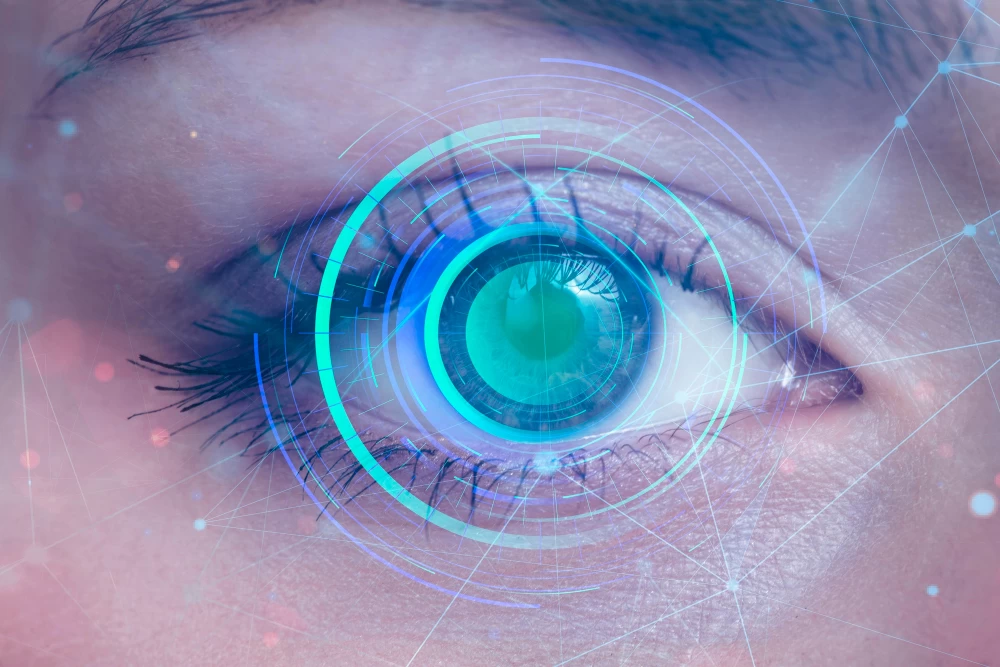
Intraocular Lenses and Smart Lenses
- Intraocular Lenses and Smart Lenses
- What is Intraocular Lens?
- In Which Eye Diseases Are Intraocular Lens Applications Used?
- At What Ages Can Intraocular Lens Applications Be Applied?
- What is Smart Lens?
What is Intraocular Lens?
The intraocular lens is an artificial lens that replaces the natural lens of the eye. It is performed by surgically removing the natural lens located behind the pupil by an ophthalmologist and replacing it with a special lens. This lens can be used to correct an eye defect, reduce age-related vision problems, or treat certain eye diseases (cataracts). It is also possible to place a second lens (intraocular contact lens-ICL) on the patient's own lens without removing it.
Intraocular lenses can be made of a variety of materials and come in a variety of sizes and shapes. The lens performs the same function of the natural lens behind the pupil and replaces the natural lens inside the eye to focus the image.
Intraocular lenses are often used during cataract surgery. Cataract is the clouding of the natural lens of the eye and usually occurs due to aging. Trauma, can be a result of various diseases and drug use, as well as congenital and can be seen in infancy. During cataract surgery, the cloudy natural lens is removed and replaced with an intraocular lens. However, intraocular lenses can also be used outside of cataract surgery.
After evaluating your eye health, your eye doctor can determine if intraocular lenses are an appropriate treatment option for you.
In Which Eye Diseases Are Intraocular Lens Applications Used?
Intraocular lenses can be used for the treatment of the following eye diseases:
- Cataract: Cataract is an eye disease caused by clouding of the natural lens of the eye. Intraocular lenses are used to provide clear vision by replacing the natural lens during cataract surgery.
- Myopia: Myopia is the condition of not being able to see far clearly. Intraocular lenses can be used to treat myopia during refractive surgical procedures, as a replacement for the eyepiece or as a second lens over the patient's own lens.
- Hypermetropia: Hypermetropia is the condition of not being able to see close up clearly. Intraocular lenses can be used for the treatment of hyperopia in patients who are not suitable for refractive laser surgical procedures.
- Astigmatism: Astigmatism is an eye defect characterized by blurring and disfiguring of images. Intraocular lenses can be used with toric models specifically designed to correct astigmatism.
- Presbyopia: Presbyopia is the state of not being able to see close up clearly with old age. Intraocular lenses, like multifocal or trifocal lenses, can be used to treat presbyopia to provide clear vision at different distances.
- Eye pressure control: intraocular artificial lenses are preferred in cases that are swollen due to cataracts and ocular pressure develops by preventing the drainage of intraocular fluid.
- Eye trauma: Intraocular lenses can be used in the treatment of eye traumas. For example, if the natural lens of the eye has been damaged in an accident, an intraocular lens may be inserted.
At What Ages Can Intraocular Lens Applications Be Applied?
Intraocular lens applications can be applied at almost any age, except infancy, when necessary, but every patient's situation is different and the treatment decision is determined by the doctor.
What is Smart Lens?
Multifocal lenses, popularly known as smart lenses, are trifocal intraocular lenses that are mostly used in the surgeries of cataract patients over the age of 40, allowing patients to see far, near and intermediate distances clearly. After the operation, the need for the use of far-near glasses is eliminated for the patients. Smart lenses are called trifocal-multifocal lenses in the medical literature.
It is also possible to place a second smart lens segment on the existing lens if patients who have had cataract surgery and have a single focal lens placed do not want to use near glasses. Thus, a previously placed single focus lens is transformed into a smart lens. The patient can see the close range without glasses.
In addition, smart lenses can be used for young myopia, hyperopia and astigmatism patients whose eye structures are not suitable for laser treatment.
Whether your eye is suitable for smart lens application can be determined after a detailed examination by your doctor.





